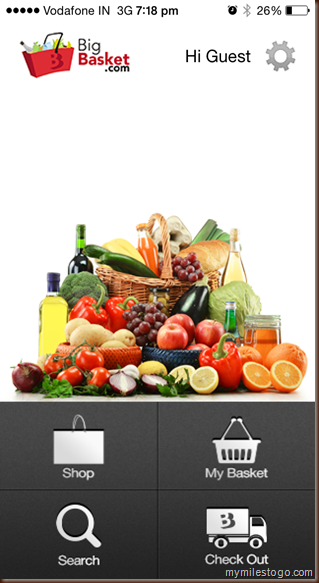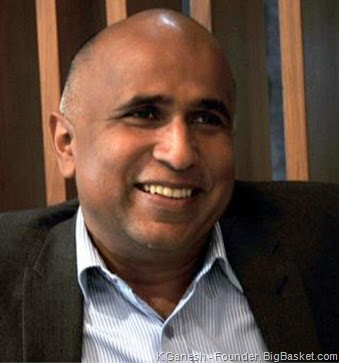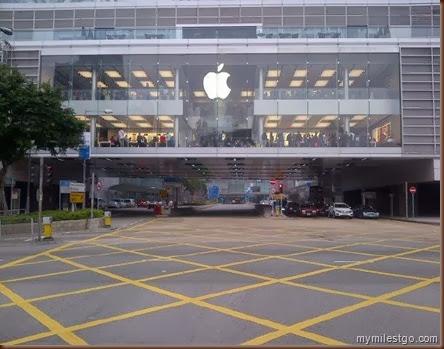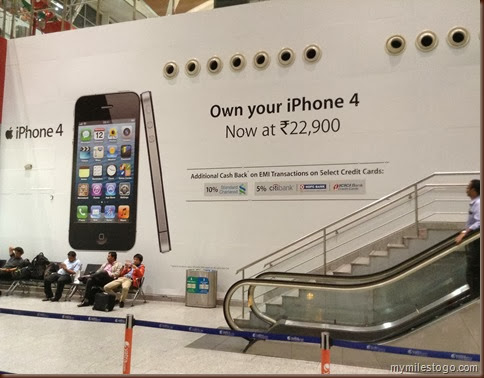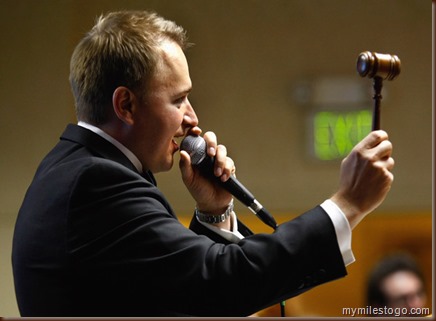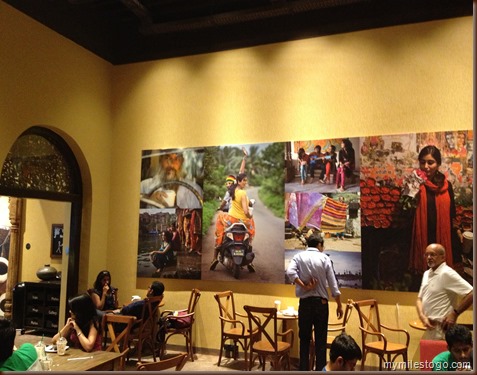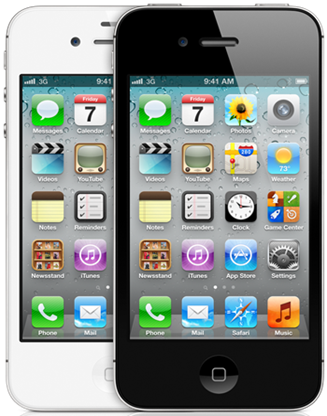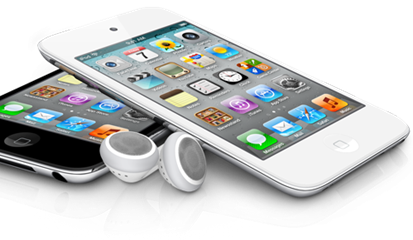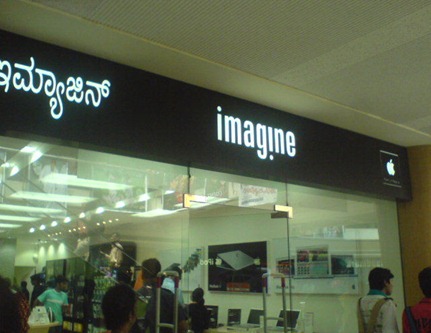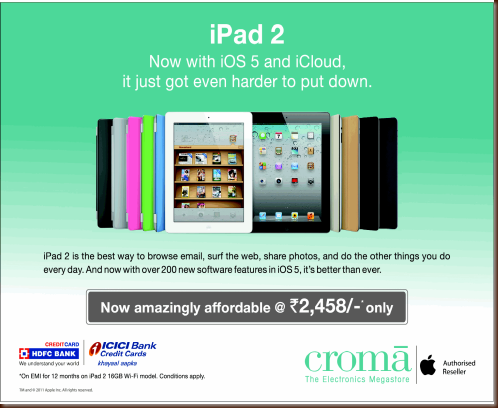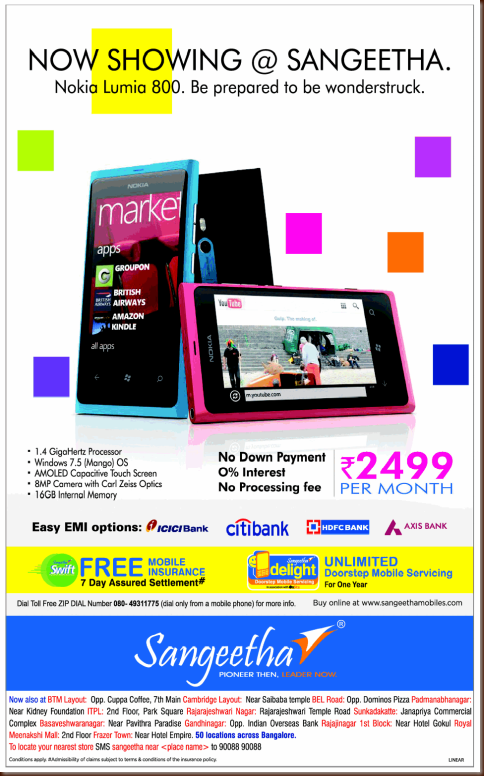So, here is the learning. Customers are always looking for products (and services). Brands spend millions of dollars to build themselves and partner with trusted franchisees and companies, only to be let down at the point of sale. Small & Medium Retailers and Store owners on the other hand sweat it out. The phone that I bought could have got him a 15% margin and perhaps also some volume discounts if he sells more. He is not venture funded with dollars from the silicon valley who fund online companies mindlessly who in turn pass on discounts at the drop of a hat and have no clue how to retain customers who are always looking for the best bargain. He is a common man – a Retailer whose bread and butter comes from each Sale that happens at the store. Therefore, the “conversion” of an onlooker to become a customer and a repeat customer is a challenge these guys are addressing very well. He gives a new meaning to the term “Customer Service” which neither E-Commerce nor Organized Retailers have been able to provide consistently to customers.
22 February, 2016
POS Conversion
So, here is the learning. Customers are always looking for products (and services). Brands spend millions of dollars to build themselves and partner with trusted franchisees and companies, only to be let down at the point of sale. Small & Medium Retailers and Store owners on the other hand sweat it out. The phone that I bought could have got him a 15% margin and perhaps also some volume discounts if he sells more. He is not venture funded with dollars from the silicon valley who fund online companies mindlessly who in turn pass on discounts at the drop of a hat and have no clue how to retain customers who are always looking for the best bargain. He is a common man – a Retailer whose bread and butter comes from each Sale that happens at the store. Therefore, the “conversion” of an onlooker to become a customer and a repeat customer is a challenge these guys are addressing very well. He gives a new meaning to the term “Customer Service” which neither E-Commerce nor Organized Retailers have been able to provide consistently to customers.
12 June, 2014
Online Grocery Shopping
There has been enough spoken and written about the Flipkart-Myntra deal. Online Commerce is no more a hype at the moment and there is no money to be made – that’s the response most subject matter experts are saying although they don’t want to be quoted since they are in various advisory capacities for many such companies. With a healthy two-digit margin, if offline Retailers are not able to succeed (read: profitable), then how would these companies survive- they ask. Having said that, there is not a single ECommerce company (in India) that has tasted profits yet. While many promoters have made millions of dollars collectively, the companies in question still remain unprofitable. I would presume that a very few of them would even be making unit level margins. Such is the discount structure and focus on Topline that these companies are almost forgetting that the main intention of a business is to create value through profitability and not just a valuation (to subsequent investors). Amongst the online frenzy across categories, the most dreaded and the most challenging category is grocery & daily needs including fruits and vegetables. Bangalore based BigBasket.com already has some headway while WeStaple.com from Noida and a few others who are regional players are taking the lead to establish their positions. Big Basket even has a Mobile app for Android and iOS from Apple. Take a look below at what their customers have to say;
https://www.facebook.com/Bigbasketcom
http://venkysundaram.wordpress.com/2013/05/29/why-i-stopped-using-bigbasket-com/
https://www.facebook.com/WEstaple
K Ganesh and his wife Meena Ganesh are an entrepreneur and angel investor-duo. BigBasket, which is run on a daily basis by the founders of e-tailer Fabmart, on the other hand, is one of India’s only online grocery stores. Online grocery stores have been seeing big traction around the world, as recurring orders prop up the profitability of the niche e-commerce category. “The Series B funding for BigBasket, which should close in the next three-to-four months, will be around $40- $50 million. We believe it has huge potential, with gross margins of nearly 20 per cent. Every order is profitable for us on BigBasket,” Mr. Ganesh told The Hindu.
Bigbasket founder Hari Menon, a successful entrepreneur who sold his brick-and-mortar retail chain Fabmall and Trinetra to Aditya Birla Group, is bullish. “It’s a huge, underserved market. Convenience is a major factor in our metros. We are finding that at least 85% of our customers return after the second order.” Menon said that revenue is increasing 20% each month. Bigbasket delivers 4,000 orders daily. In Mumbai, where the average size of an order is Rs1800, it does 800 deliveries each day. The site has served 200,000 customers so far and is expanding to Delhi and its suburbs. Menon said the company did Rs85 crore ($14.3 million) in revenue in 2013-14 and was on course to do Rs200 crore ($33.7 million) in sales this fiscal year.
While the category is exciting, most customers seem to expect the savings (on real estate) to be passed on to them, which in reality is not. If the Real Estate savings are about 10-12% on Sales, the promotions and marketing costs are much larger than that, especially the first-time acquisition cost of customers. While most players do not offer much of discounts for every item, there are chances of combined savings when you buy more quantities or multiple brands from the same company.
However, the overall sentiment seems to be simple- customers would buy products online only if they value their time more than the time spent in shopping offline at Retail Stores such as Spencers, Foodworld, Nilgiris, Big Bazaar, etc. India has a huge density of Kirana Stores while Organized Retailers in the big cities are already quite popular for more than a decade now. Fruits and Vegetables are still preferred to be bought from the vendors who sell fresh quality items, most of them directly sourced from the Markets. Retail FDI in multi-brand retailing is a contentious issue and even the new Modi-led Government is not actively pursuing this at the moment, for the benefit of the trader community who form a big chunk of vote bank.
Online Grocery, at the moment is restricted only to those who work in odd-times, say BPO Employees and many others who would find it difficult to shop at a nearby store especially those who live in far off suburbs. Having said that, the Kiranas are much more active these days, offering various facilities such as door delivery to credit facilities to their customers. While Online Grocery has a great future, time will be a real reckoner.
25 April, 2014
Happy Hours on the Web
The term “Happy Hours’ is better known for a “Buy One. Get One Drink Free” at most bars and restaurants all across the world. F&B Retailers have for long used this to lure customers to trickle in to their premises during the lean times, which is typically between 3pm – 8pm and Happy Hours are usually between 5pm – 8pm. While the margins on alcoholic beverages are quite high, say 200 – 500% on Sales, Restaurateurs forego some of it to get customers and utilize the time well and also hope that these customers would continue much after the Happy Hours are over. Also, consumption of food during the course of having a peg or a mug is quite high and hence they make money on it as well. I remember, a tony Restobar on Church Street in Bangalore offerred a group of 8 of us Happy HOurs even after 8pm, knowing fully well that the business that would arise out of our total consumption is well worth it.
What is new, is that e-commerce companies are now promoting their “Happy Hours” to lure shoppers to buy online during the so called “lean hours”. What is interesting is that the business on the web is busy only during a few hours in the day. As you would guess, it is during the day time, and between lunch and evening. The reasons for this kind of hectic activity is as follows;
Broadband Speed
Most (online) shoppers’ households still do not have the kind of internet speed that’s available at their respective offices. The Airtels and BSNLs of the world do not offer seamless connectivity that the IT Managers in small and large companies work relentlessly to ensure connectivity all the time for business purposes. And therefore consumers prefer to shop online during office hours. Incidentally, IRCTC sees hectic activity between 9am – 11am, especially for tatkal bookings.
Secure Access
Home internet is certainly not as safe and secure for making online transactions, and is vulnerable for hacking, especially by fraudsters who are constantly monitoring those who are shopping online. So, online shoppers tend to believe that office internet is much safer and is hack-proof, although it is indeed a misnomer
Delivery
Many youngsters live away from their families these days, mainly owing to work and do not have a permanent address. Some others do not have anyone to collect the goods being delivered, especially if they as COD – Cash on Delivery products. Hence it makes sense to get them delivered at their office making it more convenient.
Boredom
Over the past decade, the internet has been an important leveler to kill boredom. During the initial days, it was just about reading (Internet 1.0) where one could only transact one way. Then came the years when Google started invading our lives with various products, Youtube being a very important one. Social networking has seen hectic parleys over the years including Facebook, Twitter, Pinterest and so on. Online Shopping is a mere extension. People shop online, from grocery to gadgets, tickets to gifts, just to kill their boredom. Also, long office hours (during the week) and travel to hometown (over weekends) doesn’t allow many to shop at High Streets and Malls.
Desktop / Laptop
While mCommerce or shopping on the Apple or Android smartphones is becoming common, shoppers still prefer to see the products on a wider screen such as Desktops and Laptops as it gives them a better view of the products. Also, the reliability of 2G/3G connections is much lower than on wifi/broadband services.
I read this recently on the web;
“If I want to find something, I will Google it. If I want to buy something, I will Amazon it.”
Very powerful statement.
Amazon India recently launched a campaign to encourage shoppers to shop online during the evening hours, promising them best deals in town. I guess more and more etailers would follow this trend shortly. "Working hour visits are the highest—there's a spike around lunch time and evening and dies out at night," said Sandeep Komaravelly, vicepresident, marketing, Snapdeal.com told in a recent interview to The Economic Times. "Besides, weekdays are busy for shopping online, while weekend traffic drops by 10-12 per cent, particularly on long weekends like this one." Hasbro Clothing, the parent company of basicslife.com runs 100 exclusive offline stores and also retails via 800 multibrand outlets. "Office net connectivity is much faster than at home, prompting quick purchases at work," said Sriram Ravi, head, digital marketing, Hasbro Clothing. "We get 20 per cent daily orders around lunch time and marked increase during office closing hours. People are done with the day's work and use the last hour to browse and buy from shopping sites, while on weekends, sales in retail outlets are higher." Average time spent in buying boxers or handbags or shoes online is five to 10 minutes and these are typically repeat buyers, familiar with a site and knowing what they want.Same-day delivery options are also pushing buyers to shop during office hours. For example, eBay India offers nine-hour delivery, but for this, orders have to be placed by noon. At Amazon, orders have to be placed by 10 am to qualify for sameday delivery according to The Economic Times.
Honestly, there is no good time to shop. Anytime is a good time, from the view point of Retailers. It’s just a matter of time that Offline Retailers would also start offerring discounts during lean hours, a practice started by United Colours of Benneton many years ago. For now, check out the web for special deals. If you reading this later in the evening, you may be in for a surprise! Happy Shopping…
08 February, 2014
Smartphones & Dumbphones
In the early 2000s, there was only one mobile phone brand that was popular in India. It was none other than Nokia. It was considered the “Maruti” of mobile phones, with one model priced at a gap of a Thousand odd Rupees. Customers could choose from an array of models starting from a few thousands to a lot of thousands! Mid-2005, came the BlackBerry. A BB was the ultimate corporate tool that every executive carried; or rather wished he could carry. Over time, the company reduced the entry level prices and it was accessible to small time traders, entrepreneurs, businessmen and their ilk. The Late Steve Jobs, former CEO of Apple Inc. unveiled the iPhone to the public on January 9, 2007, at the Macworld 2007 convention at the Moscone Center in San Francisco. The two initial models, a 4 GB model priced at US$ 499 and an 8 GB model at US$ 599, went on sale in the United States on June 29, 2007, at 6:00 pm local time, while hundreds of customers lined up outside the stores nationwide. The passionate reaction to the launch of the iPhone resulted in sections of the media dubbing it the 'Jesus phone'.The fit and finish and the premium pricing meant that it excluded the masses. It was seen as a toy for the rich and famous. Soon, Apple realized that they had to be a useful product for millions of people worldwide and hence subsequent models such as the 3G, 3GS, 4, 4S, 5 & 5S were released. The latest in the line is of course the hugely popular iPhone 5S which was launched on 20 Sep. 2013. It is also the most sold model for the company.
Between the rise and fall of Nokia, Blackberry and Apple, several other brands have come (and a few have gone) with their range of smartphones. The commonality of the former three is that they used their own hardware and software whereas all other devices manufactured by brands run on the Android software which is developed and owned by Google. One of the reasons why Blackberry and Apple were appreciated by their customers was that their products were unique. While the most complained thing about the Android devices is no matter how the phone looks (or feels like), the interface is just the same of the Android. The world has most number of Android phones, but that’s probably due to cheaper price points of these phones as well.
Apple has been playing hide and seek in India for the past couple of years. While the market seems promising, its China that’s a bigger opportunity currently for the company. Despite so many efforts by its Senior Management to focus on India, the California HQ team has been reluctant to do so, for reasons best known to them. This has been clearly visible in the Sales and Marketing Strategy, Distribution network and Pricing. Clearly, India doesn’t seem to be among the favourites yet. However, last week, Apple announced that it would commence manufacturing of the now discontinued iPhone4 model to play catch up with the Android device manufactures such as Samsung, LG, Sony, Micromax and others to compete aggressively in the Indian Market.
I was astonished to see a huge advertisement for this now obsolete model at Delhi Airport’s Terminal 1D recently. Why would a user want to buy an expensive smartphone, which is now obsolete in the developed markets, at a price point where there are several other options! As many say, Steve would have never allowed it to happen. If you have read his Auto-Bio like me, you would know what I am saying. The business team is trying to play catch up in a market which is flooded with cheaper, imported as well as locally manufactured phones.The iPhone4 which I owned two years back was an excellent phone, but was only relevant then. Some of the new features that the competing Android devices currently provide are no match for the older Operating system of apple that this model runs on. Will this bring pot loads of money to the company? Probably no. Will this bring a distribution strength to Apple in India? Yes. Retailers like Croma, EZone, Reliance, Univercell, etc. would be happy to stock these phones and offer them at prices sub-20,000 with buy-back schemes and EMIs on Credit Cards. This is a wait and watch game. Apple has to do a lot more to upgrade users from dumbphones to its range of smartphones. It would not happen any soon. It would not happen with any one model. The entire infrastructure has to be focused on the supply chain-pricing-marketing model. While most Apple users do not downgrade (their models) at any cost, its mostly the users of other platforms who move to Apple. Price alone would not be enough to convert them to buyers and loyalists. Apple needs to do a lot more.
26 March, 2013
Alternate ECommerce–Auction Sites
There was a cover story about Alibaba.com, China’s largest ECommerce company in recent issue of The Economist. Quite a few facts. That it is turning out to be one of the largest ecommerce companies in the world, with sales of over $170 billion, which is Amazon and eBay put together. That it has a financing division, viz., AliFinance which provides micro credit to small firms and consumers; and that it has 6 million vendors registered on its site. What was started in 1999 by the firm’s founder, Mr. Jack Ma, an English Teacher as a B-2-B portal connecting small Chinese manufacturers to overseas buyers has now transformed into an internet behemoth. “EBay may be a shark in the ocean,” Mr Ma once said, “but I am a crocodile in the Yangzi river. If we fight in the ocean, we lose; but if we fight in the river, we win.”Taobao, a consumer-to-consumer portal not unlike eBay, features nearly a billion products and is one of the 20 most-visited websites globally. Tmall, a newish business-to-consumer portal that is a bit like Amazon, helps global brands such as Disney and Levi’s reach China’s middle classes.
Indiaplaza, which was also founded in 1999 back home in India is unfortunately facing its toughest time yet. With over 80% of its 150+ workforce having quit over the past six months, the company which pioneered ecommerce in India has no takers today. With a weak b-2-c model based on product listing by various partners, the company has just not been able to scale up over the last few years, thus allowing late entrants like flipkart, myntra, jabong and coupon sites like snapdeal and groupon to surge ahead. To be fair to Indiaplaza, most of the Ecommerce sites in India are on deathbed, awaiting Angels to come and save them. The top three players, Flipkart, Jabong & Myntra with sales of over USD 600 million collectively are only making losses and there no signs of any profitability in the immediate future. Offline Retailers have had a slow start without much success in this arena. Croma, part of the Tata Group’s Trent Ltd., Crossword, India’s largest book store chain along with Landmark and Shoppers Stop, India’s largest Department Store chain are the only few large Retailers who have attempted an Ecommerce entry over the past years. With FDI in Retail not included for Ecommerce businesses, the Government’s backing has been minimal in this regard.
Even as I was thinking so, I came across an article which mentioned about an auction site named QuiBids (spelt as KweeBids). More out of curiosity, I set-up an account to know how this works. Registration was simple.GBP 0.40 is the value of each bid (for the UK Site) and can be bought online at the store in bundles that the user can choose, which in turn can be used while placing bids or while buying an item on the site after discounts and offers. The joining fee will be refunded in full or part thereof if bids are not placed for the said value. They have listed hundreds of items and all of them are on auction. The products are genuine and the processes are audited by Grant Thornton, one of the top audit companies in the world (I have personally seen the audit assurance report which is published on their website). One can bid an item only 5 minutes before the bid time comes to an end. Which means, users keep track of all those items on bid and are probably hooked on to the site all through, if they want to participate in the bidding process. Each time a bidder places a bid, the time slot for the auction increases by 20, 15 and 10 seconds in that order. If the number of bids the user holds is over, then he/she cannot participate in the bid anymore but the value in their account can be used against purchases. Also, the value of the product is discounted to the extent the bids are placed by users. Which means, if a product is priced at, say GBP 100, and the auction ends at GBP 32, with a discount of GBP 9, then the user can buy the product for GBP 91 (less the value that is already in the account). Shipping is charged depending on the size and weight of the product. All in all, it is a win-win for the company and the user. The company makes a thin margin on sale of such products while the loss on bid money is usually written off against a publicity fee paid by the brand to feature their products. And on top of it, users also buy the product which is at a discount for them but which fetches a margin for the company. In addition to this, users may also buy “bids” for set values, so as to keep on bidding. At the end of the day, a user will only gain from the tremendous discount that he gets out of the product even after buying bids.
The prose above may not be fully convincing, so do log on to www.quibids.com to explore.
According to their website,
“QuiBids was started in July 2009 as an attempt to improve the Internet auction model by making it more exciting, safer, and more reliable. We're based out of Oklahoma City, Oklahoma and our goal as a business is simple: To provide an exciting online auction model with better deals for the consumer than any other website in existence."
You can win all sorts of popular products at incredibly low prices. Look at our homepage to see what products are up for auction right now, and if one catches your eye, buy some bids for a low price! When you place a bid, we add a maximum of 10-20 seconds to the timer - to give someone else the chance to bid if they're interested. This is similar to the "Going Once...Twice...SOLD" approach of auctions.
If no one else bids and the timer reaches zero, you’ve won a sweet deal on QuiBids! If you don't win the auction, you never have to go away empty handed. Any time after you've placed your first bid in an auction, you can choose to buy the product for a discount using the Buy Now feature. This will help limit your losses so you don’t have to leave all your bids on the table. You’ll never have to pay more than the Value Price for any products on QuiBids.
I have never come across such an exciting business model which I can comfortably say is an alternate Ecommerce model. There is hardly any publicity that I see for this company or for this form of Ecommerce and yet there are hundreds of dedicated users who are constantly bidding to win their favorite products at rock bottom prices. I guess the typical profile of the customer would be in their 20s and this is almost like a contest for them! Internet penetration is quite important for the success of this model and I presume the success of this model in western countries, which is not so the case in India where most of the internet consumption still happens at workplace with curious onlookers peeping into each others’ desktops and laptops. With Wifi (at home) using the iPad and other tablets and 3G on mobiles such as the iPhones by Apple and Blackberry gaining popularity coupled with the deeper penetration of Android smartphones starting at $ 100 (Rs. 5,500), chances are more young ones in India will appreciate and participate in such promotions in times to come.
Indian Ecommerce players need to reinvent themselves to stay ahead in the game. Afterall, everyone remembers who is the biggest of ‘em all, and not really the one who started. Such is life.
22 March, 2013
Free Wifi will be a crowd puller for Retailers
I was at the Starbucks (SBUX) outlet in South Mumbai a few days ago. SBUX, in a JV with the Tata Group opened their first outlet in India in South Mumbai a couple of months ago. We had a long day ahead and decided to start our first meeting at this location for the sheer purpose of convenience. And ofcourse, some good coffee. Not awesome coffee, atleast for me. For which I would go back to Café Coffee Day, India’s largest café chain with over 1,400 outlets across the country which in my opinion still brews the best coffee in town despite lapses in service levels here and there once in a while. I was pleasantly surprised that the SBUX outlet offers complimentary wifi to those who wish to have a sip or grab a bite and spend time around at their cafe. Ofcourse, for me it wasn’t the reason why I chose my meeting venue there. But then, anything complimentary is welcome in this mean world, I say. So there I was, connecting all my three devices – the laptop, the iPadmini and the iPhone on wifi sponsored by Tata Communications (I felt it was a great marketing opportunity for them although they didn’t seem to use it as well as they could). I was online for over half an hour, finished my emails for the morning and was all ready to step out for my next meeting. The staff at SBUX, as friendly as they were, cheered every customer who walked in or walked out with a customary welcome or thank you respectively. Even as I was walking out, I wondered how happy I was as a customer using complimentary wifi at the café. I have a USB Data Card for my laptop, 3G for my iPadmini and iPhone. But then, its sheer convenience and speed to use wifi.
I have been extensively travelling since Aug. 2012, ever since I joined Royal Enfield where I am responsible for Dealer Development and expansion of other key pet projects for the company. I book my hotels myself, mostly on my Make My Trip Mobile App for the iPhone or on their website although the former is quicker and handy. While most of the hotels provide complimentary wifi in their rooms, only a few work seamlessly. It is usually patchy and the front office staff are usually unable to resolve the connectivity issue blaming it either on the service provider or sometimes on my device! (Yes, at a Delhi hotel, the staff claimed my iPadmini was faulty). These days I look for reviews on sites like Trip Advisor while choosing a hotel that provides complimentary wifi. And most reviews are correct and genuine, as I have experienced.
That set me thinking, what if other Retailers provide Wifi to their customers. Would it bring additional walk-ins? Would it increase the stickiness? Would shoppers be showrooming – a term used for browsing the store for products and buying them simultaneously online, thereby increasing ECommerce? If so, would it help Retailers like Shoppers Stop and Landmark Book Stores which have a strong offline/online connect? I guess there are no immediate answers. Large Department Stores in the West have a café within their store so bored husbands and boyfriends could have a cup of coffee or a mug of beer while their wives/girlfriends are shopping. These days, my friends who live in the West tell me that Wifi is almost free everywhere around, which prompts them to choose a location for their need – be it a restaurant, a café , a book store or any other format of Retail. In India, unlike in the West internet bandwidth is minimal and the speed is not all that great. Cost wise too, it isn’t worthy for most Retailers to offer it free especially for those shoppers who just pass by and not really spend at their stores. Bangalore International Airport, where I worked many years ago was the first airport in India to offer free wifi for one hour to passengers passing through the airport. And most airports in India follow the trend albeit for a shorter duration. Atleast, large Indian Retailers should try this concept. With increased penetration of smartphones and tablets, there is abundance usage of data these days. Lousy 3G speeds by most Indian mobile networks mean an alternative connectivity which is what wifi is all about. Facebook and Twitter updates by the minute are not uncommon for those who are hooked on to their devices.
It’s just a matter of time that free wifi would become the thing of the day. Even now, I am sitting at another airport lounge while transiting from one city to another. And yes, this article would be published using the free wifi. Stickiness, I would say that I visit the lounge as often as I could, and just because of the complimentary boring food. If only the Lounge was more exciting with various marketing promotions other than the TV which is blaring music and bollywood gossip from one leading Indian channel just because they probably provide free Televisions!
04 May, 2012
Apple–Smart Product or Smarter Retailer?
After a lot of careful consideration over the past few months, including reading various literature online and discussion with friends and users of the iPhone, I finally decided to take the plunge. Yes. Now I own an iPhone 4S 32 GB. So, what? Actually. It is just another phone, in my opinion. It is indeed a true case study of how an ordinary product can be made an extraordinary success with simple, yet effective Marketing. One must learn from Apple in this regard. Much has been written about the technical specifications, uniqueness and superiority of the iOS of the iPhone, the Siri and various other features and hence I wouldn’t delve into it. Nor am I a technology expert to rip through comparisons with an Android phone (from Samsung or HTC ) or a BlackBerry or a Windows Phone. Oh yeah, by the way there is Nokia too. Apple iPhone 4S, for me lacks some basic stuff – such as a favourite tune as an alarm; select many / select all in the email box to delete and many such small features. Wonder how the Apple engineers skipped these and a bigger wonder that Apple Marketers kept them low-key, promoting various other features. It is a good smartphone but can be a lot better. Will leave it there.
10 days ago, I ordered my iPhone online – through www.indiaplaza.com where I work. Not just because of a particular loyalty – but also because of the Price. The phone is about Rs. 2,000 (USD 40) cheaper while buying online, compared to the ones sold at an Apple Store or other Electronic Retail chains such as Croma (from the house of Tatas), Ezone (part of the Future Group), Reliance Digital, etc. Two months ago, I bought an iPod Touch (also from www.indiaplaza.com) and the price online was a lot cheaper – I got a 10% discount while the company was celebrating the birthday of Apple founder Steve Jobs. In my view, the iPods, iPhones and iPads should also be sold through Department store chains such as Shoppers Stop and Lifestyle too. After all, it is indeed a lifestyle product as promoted by Apple and not just merely a gadget. The Apple stores are more a novelty than being electronic stores. They are a lot more engaging, inviting and most importantly (well stocked). And I am referring this from an Indian context.
I visited the Apple Store twice in a span of two months to buy accessories for my iPod and iPhone. Every time, the staff have delighted me. They speak little, but with a lot of sense. I have already bought Rs. 10,000 (USD 200) worth accessories from the Apple Store and I believe it is only because of the wonderful staff interaction that I have had each time. On the first instance, I wanted to buy a case and screen guard for my iPod and the staff showed me gladly all the varieties that they had – without indicating any obligation on me to buy. I walked up to two nearby stores that also sold mobile accessories to check out what they have – at one store, the staff was busy canoodling with his girlfriend (I guess) on the phone and had least interest or respect for the customer who came to spend money. At another store, they had stocks for every damn model but an iPod. The staff felt sorry but couldn’t offer anymore. I came back to the Apple store and ended up buying from there. I repeated my visit a month later – this time to buy a screen guard and a case for the iPhone. I visited various other electronic retail stores who didn’t stock them, and were more interested in selling larger items such as LCDs, Washing Machines and Refrigerators. Even Croma, which is known to stock a wide range of accessories wasn’t carrying anything specific for the iPhone.
Back at my favourite Apple store at the Forum Mall (Bangalore)m Simran, the sales assistant was not just being polite and interactive but was also non-obtrusive. She allowed me to have a look at things, touch and feel them and never got perturbed by the questions that I enquired regarding the various options. She was happy to answer as many and even offered a few ideas such as a “Matt-finish” scratch guard that would not leave traces of oil from the face and which is easy to wipe off. She suggested a case that not just matched with the phone but was sleek and had a good form factor. Amongst other things, she also showed a few headphones and a couple of JBL speakers. And eventually, I ended up buying a noise-cancellation Apple ear phone worth a 100 dollars (Rs. 4,800) which was completely unplanned! All in a span of a few minutes. Now, that’s what I call “engaging customers” smartly. She knew my preferences for music, realised I had an iPod Touch and an iPhone and that I could, most importantly – appreciate and enjoy the stuff that they make and sell. Hats off to their level of knowledge and customer service. Next on my list: JBL Speakers for the iPod.
I have been using a Samsung Galaxy Tab for the past one year and a BlackBerry for over 3 years. Its been just over two weeks since I have been using the iPhone. Happy with it. But would go back to my BlackBerry any day. I am just that. But all said and done, Apple is not just a product maker but also a smart Retailer. With its unique offering of products, they seemed to have mastered the art of letting customers engage with their products. Single Brand Retailers have a lot to learn from them. Of how not to sell, but to make customers buy the products. And appreciate them all their life. Kudos Apple.
24 December, 2011
When Retailers and Brands collaborate!
Its not so usual that you see Electronic Retailers promoting one particular brand at their stores. It means there is a larger strategic relationship between the two beyond just selling a few pieces of a particular model. Most retailers though, refrain from such tactics to avoid the wrath of other players in the respective segments. It is not just the advertising cost that gets shared between the two, but they both look at building an everlasting relationship to build a category, as the one undertaken between Apple and Croma, the electronic megastore from the house of Tatas. One could own an iPad 2 at just over Rs. 2,400 a month (USD 45), on an EMI basis for 12 months, thanks to credit offered by ICICI and HDFC Banks. Croma has built up their electronic retail format over the past years, thanks to its aggressive expansion mainly among metro cities where consumers shop around not just for exciting deals but where the staff are well trained, an inviting store ambience that allows you to browse at ease without too much intrusion by the staff and ofcourse, the TATA Guarantee. The Salt to Steel Major has built its retail portfolio through TRENT – the company that operates formats such as the Westside Department stores, Zara exclusive stores and Star Bazaar Hypermarkets. Incidentally, Apple which has a strategic tie-up with Reliance and allows it to operate the exclusive Apple stores has not undertaken such an aggressive promotion with Reliance Digital, the electronics format of Reliance Retail. Instead, they seem to be promoting rival Samsung with its Galaxy Tab, seen as a major contender for the No. 1 space in the tablet market.
Retailers who focus on mobile phones and accessories such as The Mobile Store, UniverCell, Sangeetha, etc. seem to play a similar strategy, just that they promote those brands which they distribute themselves. For example, Sangeetha has been promoting the latest from Nokia, the Lumia 800 pretty aggressively. At a similar EMI of Rs. 2,400 pm one can easily own the latest windows-based smartphone which was meant to revive the fortunes for Nokia, though the initial launch results have proved it to be unlikely. Nokia somewhere lost the steam – that’s the chorus that most observers and industry watchers seem to say. A once trusted phone for the smarter class lost its popularity to the Blackberry and Android based smartphones and ofcourse to the iPhone (although negligibly) due to the price disparity. Nokia continues to be a leader in the entry segment, phones below Rs. 5,000 but sees enormous competition from local brands like Micromax, Karbonn and Lava while Samsung and LG have also been stepping up the gas in these segments.
There a few advantages when Retailers promote a particular brand;
- Brand Leadership
When a Retailer courts itself with a particular brand and also aggressively promotes its products, it looks like they have leadership specific to the said brand. This brings in positive recall in the minds of potential customers who would like to buy that particular brand in future and the retailer becomes the obvious choice.
- Continuity of customer cycle
When customers of a brand want to upgrade / replace their existing products, they flock to the preferred retailers due to a previous positive experience. This is category agnostic and hence would prevail for most products, so to say.
- Better Prices
Being the preferred partner (to a Brand), the Retailer also commands a special price to the new launches. Not only do they get the products first (than the other retailers), they would also be able to command a special price – directly from the brand as well as through special associations with Banks who provide 0% interest on EMIs
There are also a few drawbacks;
- Popularity among other brands
When Retailers strike a special note with a specific brand and keep promoting them aggressively, potential customers could perceive that the Retailer doesn’t maintain other leading brands. This, in a way distracts customers and diverts them to other Retailers.
- Relationship with other brands
When other brands know that a Retailer promotes a particular brand, they may turn away to other multi-brand retailers who provide equal importance to other brands. Although this is uncommon, it could be seen as a potential threat, especially for future launches.
Nevertheless, it is nice to see Retailers and Brands collaborate to promote each other. The Retailer attracts walk-ins into the store and the Brand sees higher conversion. In the US, UK and European markets, there has been a strong swing towards e-commerce over the last few years where customers are shopping online for mobiles and electronics. This is bound to happen in India soon. Until then atleast, let such collaborations prosper!
A Firefly finally takes off
Monday - 22 Jan. ‘24 is a very important day in my professional life. I complete eight months today in my role as Executive Vice President a...

-
12 December is celebrated annually as Retail Employees Day, an occasion to thank the frontend staff who have taken up Retail as their pref...
-
The world is split into two for the last week or so, ever since India’s self-made billionaire and tech mogul Mr. Narayana Murthy (NRN) said ...
-
It’s been over 5 months since I wrote anything on this blog, especially. Not that I didn’t have anything to observe, even better to share my...



